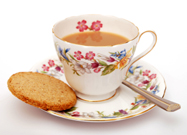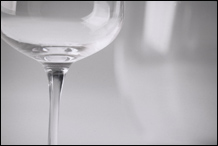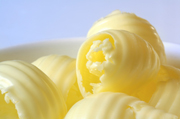I’m not sure I could be bothered will all of this all of the time but it’s good to know as I too love the crisp perfection of hotel beds. It’s also well worth reading the comments after this article for yet more hints from readers.
Tag Archives: tips
Cider Roast Turkey
SERVES 8 with leftovers. PREPARATION TIME 15 minutes.
COOK approx 4 hours for a 4.5 – 6 Kg (10-12 lb) bird.
Moderately easy recipe
Choose a free-range bird for the best flavour – they’re more expensive, but well worth it for a special occasion. Here in the UK I’ve found KellyBronze has a good flavour.
FOR THE TURKEY
4.5 – 6kg (10-12 lb) turkey, giblets removed and kept
450g / 1lb stuffing
2 leeks, trimmed and halved
2 carrots, halved
50g / 2oz butter, softened
300ml /1/2 pint of dry cider
FOR THE GRAVY
300ml /1/2 pint dry cider
600ml / 1 pint of chicken or home made turkey giblet stock
2 tbsp quince or redcurrant jelly (cranberry jelly would also work well as an alternative if you can’t find quince or redcurrant)
……………………………………………
Heat the oven to 190C / 375F / Gas 5 / 170C for a fan oven (approx 365F).
Wash and dry the turkey, removing any feathers. Pull out the giblets and the neck, then set aside. Lift up the skin that covers the neck opening, then stuff the stuffing up and under the skin, securing it tightly underneath with a skewer or two cocktail sticks.
Weigh the stuffed turkey (you may to use bathroom scales to do this), then calculate the cooking time, allowing 40 minutes per kg (20 minutes per pound).
Put the leeks and carrots in the bottom of a roasting tin in a single layer – this makes a trivet for the turkey to sit on, keeping it out of the fat that pools in the bottom of the tray and also adding flavour to the gravy. Take the neck from the giblets you had set aside and add to the tin (again for flavour).
Sit the turkey on top of the layer of carrots and leeks and coat the breast all over with butter. Pour in the cider, cover with foil, then roast according to your timings. Keep checking the tin every 20-30 minutes and if the vegetables look like they’re burning, add a splash of water or cider.
At 30 minutes before the end of cooking, remove the foil and season generously with salt and pepper.
To test if the turkey is ready, pierce the thigh through its thickest part – the juices should run clear. Take the turkey out and leave to rest, covered with a clean tea towel.
Leaving the bird to rest is essential in order to allow the fibres of the meat to relax again and for the residual moisture to redistribute in the flesh. You can leave the turkey to rest for up to an hour.
TO MAKE THE GRAVY
Drain the fat and juices from the tin into a jug, discarding the veg and the neck.
Place the tin over a flame then pour in the cider, scraping up the flavour filled crusty bits with a wooden spoon.
Reduce the cider by half, then strain into a saucepan (this will save you hob space later).
You should find that by now the juices you poured out of your roasting tin into a jug will have separated out – the fat floating to the top. Carefully tip off this excess fat, then add the remaining juices to the reduced cider and pour in the stock. ***Reduce over a high heat for about 10 minutes until slightly thickened. Stir in the quince jelly, taste and then season if necessary – if you’re using commercially pre-prepared stock be warned that this usually contains a lot of salt so your gravy may only require a little cracked black pepper by way of seasoning.
Pour the gray into a serving jug or gravy boat, any resting juices that have come out of the turkey should go in now too.
***If you prefer a thicker gravy, mix 1 tsp cornflour with a splash of cold water, then add to the gravy, stirring constantly until smooth and glossy.
………………………………………………………………………
This recipe has been slightly adapted from one that appeared in the December 2007 Christmas edition of BBC Good Food magazine. All photos from the same article.
Filed under Christmas Countdown, Cookery
Natural fertilisers
 If you want to go organic and steer clear of chemical fertilisers in the garden then there are a few natural alternatives. Common nettles make a good, if smelly alternative to commercially prepared chemical versions (another good reason to leave a patch of your garden to run wild).
If you want to go organic and steer clear of chemical fertilisers in the garden then there are a few natural alternatives. Common nettles make a good, if smelly alternative to commercially prepared chemical versions (another good reason to leave a patch of your garden to run wild).
 For obvious reasons, wear some rubber or gardening gloves to harvest, tear and scrunch up enough nettle stems and leaves to loosely fill a watertight container such as a bucket. Then weight them down, say with an old plate. Fill the container with enough water to cover the crushed greenery and then leave to rot down. (This is a bit smelly so you may want to place this somewhere away from the house)!
For obvious reasons, wear some rubber or gardening gloves to harvest, tear and scrunch up enough nettle stems and leaves to loosely fill a watertight container such as a bucket. Then weight them down, say with an old plate. Fill the container with enough water to cover the crushed greenery and then leave to rot down. (This is a bit smelly so you may want to place this somewhere away from the house)!
The brew should be ready to use in 3 to 4 weeks and needs to be diluted for use – usually in a ratio of roughly 1 part  nettle liquid to 10 parts water (the resulting diluted liquid should look the colour of tea). You can keep topping up your supply bucket with nettles and water as the season progresses. Once your flowers have finished flowering and you no longer have use for the homemade fertiliser, just tip what remains onto the compost heap.
nettle liquid to 10 parts water (the resulting diluted liquid should look the colour of tea). You can keep topping up your supply bucket with nettles and water as the season progresses. Once your flowers have finished flowering and you no longer have use for the homemade fertiliser, just tip what remains onto the compost heap.
Another alternative is coffee grinds. Sprinkle them around plants before you water or before rain and the grinds will slowly release nitrogen into the soil.
 Crushed eggshells are a well-known old-fashioned fertiliser and work particularly well scattered around roses because of their calcium carbonate content. (An added bonus is that their sharp edges also help to deter slugs).
Crushed eggshells are a well-known old-fashioned fertiliser and work particularly well scattered around roses because of their calcium carbonate content. (An added bonus is that their sharp edges also help to deter slugs).
If you’re lucky enough to live by the seashore then some of the best fertiliser is freely available in the form of seaweed. You can either treat it in the same way as the nettles above and make a ‘tea’ out of it (which again needs to be diluted for use) or, if it is winter time, dig the seaweed directly into plant borders to feed and condition the soil.
Lastly, but by no means least, consider making either a compost heap or set up a worm  composting bin. In my experience worm bins don’t smell (I kept mine in the garage) and given time they produce wonderful, fine compost and the ‘run-off’ is a good liquid fertiliser for the garden (use diluted as above).
composting bin. In my experience worm bins don’t smell (I kept mine in the garage) and given time they produce wonderful, fine compost and the ‘run-off’ is a good liquid fertiliser for the garden (use diluted as above).
Filed under Gardening, General house tips, General tips, Money saving tips
Summer colour and scent
I don’t really know why I decided to split my WordPress writing into two different pages but I did. So there – it’s done. This does mean, however, that when I spend time writing a piece for one site, I don’t really have the time to do the same for the other. Can I just tell you therefore that I’ve just posted a wonderful (!) article on adding Summer colour and scent to your garden by using Summer bedding plants over at Gentle Voice. Please visit and immerse yourself in my usual pearls of wisdom. 😉

Filed under Home, Photography
Tea, glorious tea
 I’ve just written about my own addiction to this glorious drink over at my regular blog and just thought that I’d give you a quick run-down of perhaps lesser-known facts about tea because…well just because you can never know too much about something you love.
I’ve just written about my own addiction to this glorious drink over at my regular blog and just thought that I’d give you a quick run-down of perhaps lesser-known facts about tea because…well just because you can never know too much about something you love.
Did you know that tea, in its dry form contains more caffeine than coffee? However, just to confuse you, a prepared cup of coffee contains higher levels than prepared tea.
Unlike coffee, tea also contains valuable anti-oxidants that are associated with preventing cancer and heart disease.
Tea is made from the leaves of a camellia plant, in this case Camellia Sinensis.
Since tea was first introduced into Britain (during the reign of Queen Elizabeth I, 1533-1603) it has been credited with healing powers. This is reflected in a few current English brand names – P.G. (which is said to stand for ‘pre-gestive’) and Typhoo (which is Chinese for ‘doctor’).
A New York merchant named Thomas Sullivan is credited with having invented the first tea bag in 1904 when he sent out samples enclosed in silk.
 As a nation the British drink 175 million cups of tea daily and this consumption makes it our number one beverage.
As a nation the British drink 175 million cups of tea daily and this consumption makes it our number one beverage.
The habit of drinking black tea with lemon was a Russian habit introduced by the eldest daughter of Queen Victoria, the Princess Royal, who was married to the Emperor of Prussia. However the habit never caught on amongst the general British population as the overwhelming amount of tea is drunk nowadays with milk.
‘Char’, as in the English expression ‘a nice cup of char’ (i.e. tea) is derived from the Chinese word for tea – tcha.
Finally – making tea. There has been an on-going debate about whether to add the milk to the tea first or second. Those who brew their tea and then add the milk insist they are right. I say they’re wrong and now I’m being backed up by scientific evidence (there’s nothing like being smarmy is there)?! Adding the milk after the tea has brewed precipitates the release of tanins, which tend to make the tea taste more bitter, not to mention causing worse staining of your teeth and the tea cups. Also, the proteins in milk more easily split and divide if added to the hot tea, leading to clumping. …And no one wants clumpy tea now do they?.
Filed under Cookery, General house tips, General tips
Sleep, Rest and Recoup

Tips for a restful night’s sleep
If you’re reading this, logic tells me that you are concerned about lack of sleep. First of all, it’s important to say that while 8 hours is the accepted norm for a good night’s sleep, you needn’t necessarily feel bad because you routinely sleep for less than this. Some people actually only need 4 hours (Margaret Thatcher being a famous example), while others are out for the count for a full 12 (just about every teenager on the planet).
However, sleep deprivation, when your body is telling you that you need more rest (!), can be both debilitating and depressing and no one really wants to resort to potentially addictive chemicals to solve the problem. There are so many possible causes, cures and herbal remedies that I thought it might be helpful to put together a whole list of them. I hope you’ll find something here to help.
Herbal Help
Lavender has been known for centuries to induce relaxation and can be used in a number of ways: a couple of drops of essential oil sprinkled on the corner of your pillow will help, as will lavender oil in a cold diffuser placed in the  bedroom.
bedroom.
A warm bath, at the optimum time of two hours before bed, helps to regulate body temperature to an ideal level and is particularly helpful when combined with lavender products like bubble bath and body lotion.
Herbal teas can also prove useful – chamomile and valerian (which is often combined with hops) are both well-known for aiding relaxation and sleep. While both will help with insomnia, I’ve read recently that valerian, especially when combined with ‘chaste tree’ may help with sleep maintenance.
Extra help and accepted wisdom
Even 20 minutes of gentle exercise during the day can help to stop stress hormones from interfering with sleep.
Try to avoid heavy meals just before bed – a minimum two hour gap between meal and bed is a good idea.
 Avoid caffeine drinks like regular tea, coffee and cola in the evening.
Avoid caffeine drinks like regular tea, coffee and cola in the evening.
Is your actual bed ‘up to muster’? The lifespan of a bed depends largely upon quality but as a rule of thumb, if your bed is ten to twelve years old you should probably replace it. (Here’s a tip: If you suffer from backache, it may just be your bed)!
Equally, do you need new pillows? There are a huge variety of pillows out there – foam, feather, down – and it may just be that a change of pillow would help you get a restful night’s sleep.
Try to avoid sheets with a high synthetic content. Sheets with a high cotton content allow your skin to breathe, which in turn makes the bed feel more comfortable. (I tend to buy sheets with a maximum cotton / minimum polyester content, simply because I’ve found some pure cotton sheets can be an absolute swine to launder).
Environment
Try to ensure that your bedroom is furnished fairly simply and is clutter free. Psychologically, a clutter free bedroom makes for a calmer and more relaxing atmosphere.
Look at using colours for walls, carpets and soft furnishings that you personally find relaxing. Traditionally shades of blue and green evoke feelings of calm and relaxation in many people but you may have something else in mind. (For example, I always seem to opt for gentle creams).
Try not to watch TV or work in bed. Your bedroom should become associated in your mind with your own haven of peace and utter relaxation.
 The best temperature for a relaxed sleep is surprisingly cool, i.e. 68 degrees. Fit individual thermostats to radiators if you can so that you can keep your bedroom at this temperature (and save money)!
The best temperature for a relaxed sleep is surprisingly cool, i.e. 68 degrees. Fit individual thermostats to radiators if you can so that you can keep your bedroom at this temperature (and save money)!
It goes without saying that minimising noise and light will also help – it’s strange but true that even though you are asleep you will become aware of increasing light levels in a room where the curtains / blinds allow the morning light to percolate through.
If you live in a quiet area and it is safe to do so, leaving a ‘top light’ /small window slightly ajar to let in some fresh air is a good idea. Good sleep doesn’t happen easily in a stuffy, ‘sealed’ room with stale air.
Less obvious but worth mentioning anyway:
Airing the room each day, allowing a fresh supply of oxygen to flow through your room will keep it smelling sweet and welcoming.
Toss back the covers each morning to allow cool air to permeate the bed covers. Even half an hour of this while you shower will keep the bed smelling fresh (not to mention keeping any mites at bay)!
Make the bed each day – an un-made bed doesn’t exactly call you to its gentle embrace, now does it?
Change the bed sheets each week (hopefully you knew that one already)!
~~~~~~~~~~~~~~~~~~~~~~~
I really, really hope something here will be of help. Let me know how you get on and…
Remember if this is an on-going problem and you feel at all concerned you should still talk to your doctor.

Filed under Beauty, General Health, General house tips, General tips, Herbal alternatives
Caring for glassware
 Dishwashers are wonderful, time saving devices but unfortunately do no favours at all to precious glassware. If you find that your glasses are losing their sparkle and becoming cloudy it may well be because of the action of the dishwasher – a combination of the softeners that are put into many water supplies, coupled with the high temperatures and the detergent we use in the dishwasher.
Dishwashers are wonderful, time saving devices but unfortunately do no favours at all to precious glassware. If you find that your glasses are losing their sparkle and becoming cloudy it may well be because of the action of the dishwasher – a combination of the softeners that are put into many water supplies, coupled with the high temperatures and the detergent we use in the dishwasher.
Delicate crystal or precious glassware is therefore best cleaned by hand. If you don’t want to tackle the washing up straight after you’ve used your glasses, do at least give them a quick rinse so that wine or other liquids aren’t sitting in them for any length of time. Wash individually in hot soapy water – ordinary washing up liquid will do – and then rinse straight away in hot clear water. (Don’t rinse in cold water because the change in temperature may make the glass shatter). Place on a draining rack and then dry with a lint free cloth. (I usually dry with kitchen roll and then shine with a lint free cloth).
If you have items like narrow vases that are difficult to clean, use denture cleaning tablets to do the work for you but only leave for the recommended length of time. Rinse and then dry.
Glassware that has a cloudy or milky appearance may be restored to a sparkle by wiping gently with vinegar on a soft cloth. However, it’s worth saying that liquids can actually permanently etch the surface of glass, giving that same milky appearance.
The moral of the story is simple: Never leave liquids sitting in glassware for any length of time.
Filed under General house tips, Housework Tips
Cooking terms – Mise en Place
 Mise en place (pron: meez on plass, translated as ‘put in place’)
Mise en place (pron: meez on plass, translated as ‘put in place’)
Occasionally cook books will refer to having everything ‘mise en place’. As the translation above infers, this just means to have everything in place before you begin – so prepare any fruit or vegetables, weigh out ingredients and preferably have any utensils that you might need to hand. If you can get into the habit of doing this all the time you’ll find your cooking becomes more 0rganised, less messy and ultimately less time consuming.
Filed under Cookery
Lingerie / Laundry bags
 Laundry bags are useful for more than just delicate lingerie. Socks notoriously and inexplicably lose their pair whilst going through the washing system. If you zip all your socks into a laundry bag before washing you will know that all pairs will be coralled into one small space, meaning that there can be no sock escapees.
Laundry bags are useful for more than just delicate lingerie. Socks notoriously and inexplicably lose their pair whilst going through the washing system. If you zip all your socks into a laundry bag before washing you will know that all pairs will be coralled into one small space, meaning that there can be no sock escapees.
Bags can be bought in different sizes and mesh. Small mesh bags are designed specifically for things like bras so that the hooks cannot snag on anything else in the wash. Bigger sized bags are available for items as large as blouses and skirts, giving them some extra protection from catching on anything else in the drum of your washing machine.
All delicate lingerie should ideally be washed by hand if you want it to last longer. In reality, of course, most of us don’t have the time or inclination to hand wash, especially when we know that washing machines often have a ‘hand wash’ or ‘delicates’ cycle that can be used. However, underwire bras really don’t take to the mechanical buffeting and twisting they get in the washing machine. Specially shaped laundry bags/’pockets’ designed specifically to protect under-wire bras are now sold from stores like Lakeland here in the UK***. Be aware however that these particular bags have received mixed reviews from consumers at the above linked site, so for underwires at least, you may have to stick with washing by hand.
Filed under Housework Tips, Laundry




 I don’t think anything compares to the taste of real butter in cooking. Butter-based spreads have come into existence to try to provide healthier alternatives but they are not always ideal for cooking. Here is a quick low-down on the basic versions of butter available, plus a few facts and hints:
I don’t think anything compares to the taste of real butter in cooking. Butter-based spreads have come into existence to try to provide healthier alternatives but they are not always ideal for cooking. Here is a quick low-down on the basic versions of butter available, plus a few facts and hints:





